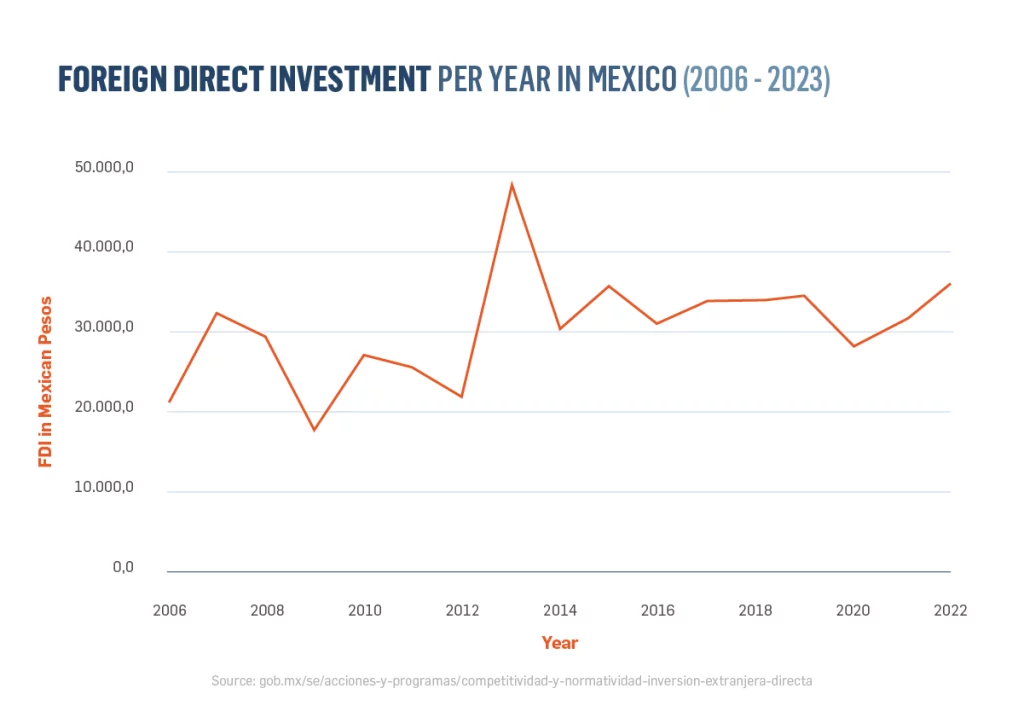How to Manufacture in Mexico: A Comprehensive Overview

Manufacturing in Mexico has become an attractive option for foreign companies looking to optimize their production processes, reduce costs, and access new markets. Mexico offers several modes of entry that balance risk, control, and investment. Let’s explore five ways to manufacture products in Mexico and gain insight into each model.
The Standalone Model:
The standalone model implies establishing an independent manufacturing operation in Mexico. However, it is common for companies to initially outsource certain functions, such as personnel recruitment, payroll, import and export, accounting, and more, to specialized service providers. Building a full administration team from scratch and forming a new legal entity in Mexico are typical steps in this model. While the standalone model provides total control, it requires a significant upfront investment and a high level of confidence in the company’s ability to handle all aspects of operations.
The Shelter Model:
The shelter model originated in the 1980s and acts as a hybrid between standalone and contract manufacturing. With this model, a foreign company retains 100% control over production-related functions and assets while partnering with a Mexican “shelter” company for administrative and non-production burdens. The shelter company becomes the Mexican legal entity responsible for compliance, taxation, and trade regulations. By operating through a shelter company, foreign manufacturers benefit from reduced risk and government incentives. The shelter model is recognized and supported by the Mexican government and offers a proven mechanism for entry into the Mexican market.
The Contract Manufacturing Model:
Similar to contract manufacturing in other countries, this model involves partnering with a Mexican contract manufacturer that owns production assets and assumes responsibility for producing goods on behalf of the foreign company. Contract manufacturers in Mexico, typically electronic manufacturing services (EMS) providers, offer their expertise and charge a fee for their services. This model allows companies to leverage the manufacturing capabilities and infrastructure of established Mexican manufacturers without the need for significant capital investment.
The Merger or Acquisition Model:
Merging with or acquiring an existing Mexican manufacturer is a less common approach but can be advantageous in certain scenarios. By joining forces with an established manufacturer, foreign companies can expedite the learning curve of operating efficiently in Mexico. However, this model carries the potential risk of inheriting less-than-optimal management and leadership practices. It is worth noting that many of the established manufacturing operations in Mexico are already owned or affiliated with foreign companies.
The Joint Venture Model:
A joint venture involves a partnership between a foreign company and a Mexican manufacturer, where each party brings distinct strengths to achieve a common goal. This model is particularly beneficial when the foreign company has a captive market of customers but requires the local expertise and assets of a Mexican manufacturer. In the maquiladora industry, joint ventures between independent parties are less common, as most maquiladoras have a related foreign partner.
Each manufacturing model in Mexico offers unique benefits and considerations. Companies must carefully evaluate their objectives, risk tolerance, control requirements, and available resources before selecting the most suitable approach. It is advisable to consult with local experts and engage reputable service providers to navigate the complexities of manufacturing in Mexico successfully.
Manufacturing in Mexico can provide significant advantages, including access to a skilled labor force, proximity to major consumer markets, favorable trade agreements, and a supportive business environment. By leveraging these opportunities and choosing the right manufacturing model, companies can enhance their competitiveness and expand their operations in Mexico.






